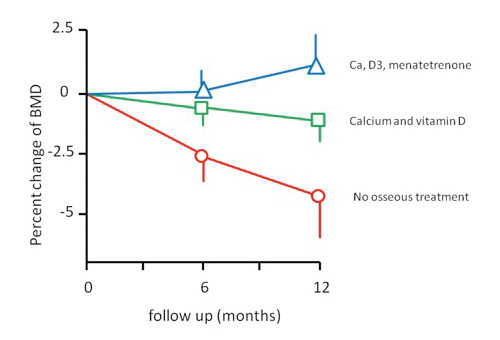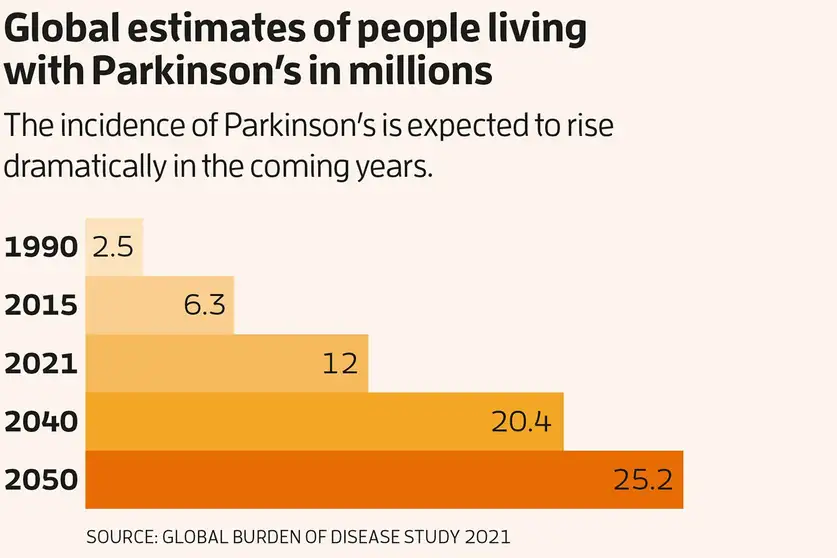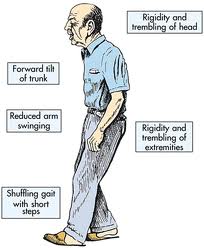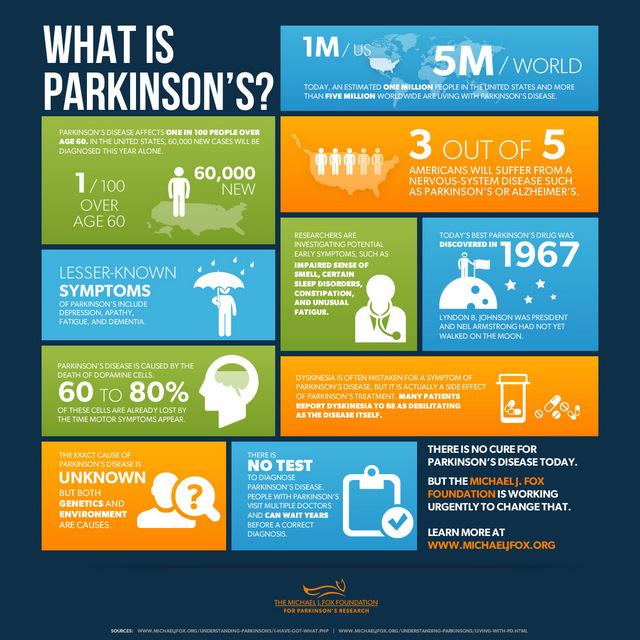Overview Parkinson's and Vitamin D
Parkinson's Disease summary in Vitamin D Life
Vitamin D associated with Parkinson’s Disease in 55 studies, more studies needed- March 2022
Parkinson's category has studies
Parkinson’s Disease and Vitamin D – review of 52 studies – May 2022
Low Vitamin D increases Parkinson's by 3X – July 2010 "only" a 30 year test, need more study
Parkinson's disease prevented by Vitamin D, but small doses do not treat it - Aug 2023
12 clinical trials for PD with vitamin D intervention as of June 2025
Parkinson’s Disease Summer School – alternative therapies included 60-80 ng of Vitamin D – Sept 2019
Associated with PD are: Meta-analyses ( ), Cognition ( studies), Multiple Sclerosis ( studies), VIRUS ( studies), Omega-3 ( studies), Vitamin D Receptor ( studies)
Note by the Founder of Vitamin D Life: I have twice recommended lots of Vitamin D to treat PD. Both got much better, but one had his doctor him cut back to just 2,000 IU. All of his recovery got reversed. With lots of vitamin D he could sing and bike, but now he can barely talk or walk
See also on Vitamin D Life
Parkinson's disease and vitamin D – review finds promising indications – April 2014
Comparison of Alzheimer's Disease and Parkinson's Disease – Sept 2013
Review of Parkinson's disease and vitamin D recommends use of active form – Aug 2012
20 percent less chance of Parkinson’s disease if work outdoors some – Thesis Feb 2013
Parkinson's disease increased in Israel by 50 percent in 7 years – June 2011
Reasons for vitamin D deficiency during past several decades
Role of vitamin D in Parkinson's disease - March 2012 technical
Comparison of Alzheimer's Disease and Parkinson's Disease – Sept 2013
Overview Fractures and Falls and Vitamin D - note, more likely to fall if low vitamin D, as is the case with PD
Omega-3 prevents Parkinson’s Disease – Review of RCT July 2019
[dl2672] Literature review - PDF file, which has the following image

Virtually all PD patients have digestive issues (probably need gut-friendly Vitamin D) - Oct 2023
When digestive symptoms signal Parkinson’s disease MD Edge]
"The fact that nearly all patients with Parkinson’s disease experience digestive problems and have neuropathological lesions in intrinsic and extrinsic innervation of the gastrointestinal tract suggests that Parkinson’s disease also has a gastrointestinal component."
Overview Gut and vitamin D contains gut-friendly info:
{include}
Those with PD have 7X higher/lower amounts of certain gut bacteria - Jan 2023
Parkinson's Disease May Start in the Gut and Spread to the Brain Trial Site News
- "For example, the bacterial species (Bifidobacterium dentium), which is known to cause anaerobic infections such as brain abscesses, were found to be elevated seven-fold in those with Parkinson's and a 7.5-fold reduction in the bacteria such as Roseburia intestinalis which is known to be inhabitant of healthy colons (constipation is a recognized symptom of Parkinson's) was also detected."
Study = Metagenomics of Parkinson’s disease implicates the gut microbiome in multiple disease mechanisms - https://doi.org/10.1038/s41467-022-34667-x FREE PDF
See also: Parkinson's Disease and gut microbiome - several studies
Note: Vitamin D massively changes the composition of gut bacteria
Vitamin D levels change Gut Microbiota – 25 study review Sept 2021
Gut microbiome massively changed by weekly vitamin D – July 2015
Candidate nutraceuticals to fight PD (Oct 2022)
1 or more Vitamin D Receptor activators (to get more D to the brain) such as Turmeric, Curcumin, Resveratrol
Omega-3 (and decrease Omega-6)
Glutathione anti-oxidant
CoQ10
perhaps Inhaled vitamin D help lungs - many studies Inhaling it thru the nose gets it directly into the brain
Vitamin D Life - Meta-analysis of Parkinson's studies
{category}
Parkinson's incidence increase 10 X in 60 years

Parkinson’s is the fastest-growing neurodegenerative condition in the world. (Lancet)
How Parkinson’s Caregivers Burn Out Silently — And How to Cope - June 2025
"caregiver burnout often develops silently, unacknowledged by others and even by the caregivers themselves."
38,900 studies have ( parkinson "vitamin d") (RCT OR Trial OR meta-analysis) as of June 2025
Co-administration of probiotics and vitamin D reduced disease severity and complications in patients with Parkinson’s disease: a randomized controlled clinical trial - May 2024 https://doi.org/10.1007/s00213-024-06606-9 $40
Vitamin D in Parkinson's disease: A systematic review of randomized controlled trials Dec 2023 FREE PDF
Does vitamin D protect or treat Parkinson’s disease? A narrative review - Aug 2023 FREE PDF
Factors associated with COVID-19 in people with Parkinson’s disease: a systematic review and meta-analysis - May 2021 $16 PDF
- The PD patents who happened to be taking vitamin D were 11X less likely to die of COVID?
- Understanding the role of "sunshine vitamin D" in Parkinson’s disease: A review - Dec 2022 FREE PDF
See also on web
#F00:Clinical Trials of Parkinson's with Vitamin D INTERVENTION12 trials as of April 2025Vitamin D Status and Parkinson’s Disease - June 2022 - FREE PDF
An umbrella review of systematic reviews with meta-analysis on the role of vitamins in Parkinson’s disease - Aug 2022 $40
- Vitamin D, Vitamin B12, and Vitamin E all appear to help, 85 references https://doi.org/10.1007/s13760-022-02055-3
Parkinson's disease: the nutrition perspective - Oct 2021 FREE PDF
The Emerging Role of Vitamin D Deficiency as a Risk Factor of Parkinson’s Disease = June 2022 DOI: 10.1007/978-981-16-9205-5_12 20-page chapter
A Review of the Relationship Between Vitamin D and Parkinson's Disease Symptoms - May 2020 FREE PDF
Association Between Serum Vitamin D Levels and Parkinson's Disease: A Systematic Review and Meta-Analysis - Nov 2018 FREE PDF
Person with PD has videos of his use of THC, CBD, Deep Brain Stimulation, and Coimbra' Protocol to decrease PD
The Prevalence of Stroke in Parkinson's Disease Is High Feb 2014 3-4X higher
Might be possible for a computer to listen to the voice on phone and diagnose Parkinson's Jan 2013
- The voice cord muscles have similar degradation with PD as do many other muscles.
- The group has gotten >10,000 voice recordings to try to find voice patterns associated with PD
- " 98.6% detection accuracy (that is, the percentage of samples that were correctly identified as being either healthy or Parkinson's...) "
- AI looking at an video of 3 facial expressions: 85% probability that the person has PD - June 2025
- https://ai.nejm.org/doi/full/10.1056/AIoa2400950?query=ai_toc PDF behind paywall
- Parkinson's disease Wikipedia
- PD is more common in the elderly and prevalence rises from 1% in those over 60 years of age to 4% of the population over 80
- Red Headed people are 90% more likely to get PD
- Red Heads sunburn more, so they stay away from the sun more
- Red Heads are more sensitive to pain, an indication of low vitamin D
Signs and symptoms of Parkinson's disease Wikipedia, excellent; Includes Slowed cognitive speed (Bradyphrenia).
Hypomimia Wikipedia, a medical sign, is a reduced degree of facial expression.
- CLICK HERE for web search of "parkinson's disease" "poker face" >5,140 items June 2025

PREVALENCE OF PARKINSON'S DISEASE huge variation around the world
GENETIC CAUSES OF PARKINSON'S DISEASE lots of detail on specific genes, no mention of vitamin D
The woman who can smell Parkinson's disease BBC News Oct 2015
- Confirmed by 100% correctly identifying "musky odour" of T shirts: 7 with PD, 5 without PD
- She first noticed the odour of her husband before he was diagnosed with PD
- Pot for Parkinson's? The Scientific Evidence Is Compelling Nov 2015
- CBD, which is legal and sold on Amazon, is great for treating PD
- Random Controlled Trial with good results suspected CBD had "anxiolytic," "antidepressant," "anti-psychotic," and "sedative" properties.
- Update Dec 2016 US Drug Enforcement Agency has classified CBD as bad as Cocaine, heroin etc
- Note: I am unaware of any cases of CBD addiction
- Link has a 219 pages of studies showing the benefits of CBD
- Gut Microbiota Regulate Motor Deficits and Neuroinflammation in a Model of Parkinson’s Disease
- Cell Dec 2016 "Human gut microbiota from PD patients induce enhanced motor dysfunction in mice"
- Vitamin D not mentioned, but previous studies have shown that Vitamin D influences gut bacteria
- Mercola report on the study points out the gut problems of people 10 years before getting PD
- 📄 Download the PDF from Vitamin D Life
- Use of Paraquat in the US has increase by 10X in the past decade NYT Dec 2016
- Paraquat is associated with Parkinson's Disease. It is not permitted to be used in China, Europe, etc.
- NYT includes a link to NIH report about Paraquat and PD in 2011 and a link to a Meta-analysis of 2X increase in PD with pesticides/solvents
- US EPA still permits it to be used in 2019
- Serum 25-hydroxyvitamin D3 level may be associated with olfactory dysfunction in de novo Parkinson's disease Aug 2018
- Bell Peppers to Help Ward Off Parkinson’s Gregor Video Dec 2018 nicotine, not Vitamin D
- "...tobacco is a nightshade plant, so it’s in the same family as tomatoes, potatoes, eggplants, and peppers. And guess what? They all contain nicotine as well"
Vitamin D Deficiency-Induced Vertebral Fractures May Cause Stooped Posture in Parkinson Disease - 2011
American Journal of Physical Medicine & Rehabilitation: April 2011 - Volume 90 - Issue 4 - pp 281-286
Sato, Yoshihiro MD; Iwamoto, Jun MD; Honda, Yoshiaki MD
Results: During the 5-yr study period, stooped posture developed in 34 patients; the rest of the 58 patients did not show stooped posture. At baseline, mean serum 25-hydroxyvitamin D and parathyroid hormone levels were 10.9 ng/ml and 73.1 pg/ml, respectively, in the stooped group and 18.6 ng/ml and 56.4 pg/ml, respectively, in the nonstooped group. Bone mineral density in the stooped group was significantly lower than in the nonstooped group. Dietary intake of vitamin D in the stooped group was significantly lower than in the nonstooped group.
During the study period, 19 (22%) patients in the nonstooped group developed new vertebral fracture, compared with 23 (100%) patients in the stooped group.
The mean ± SD percentage changes in bone mineral density were ?6.5 ± 0.6 in the stooped group and ?3.8 ± 0.8 in the nonstooped group.
Mean serum levels of 25-hydroxyvitamin D after 5 yrs were 7.0 ng/ml in the stooped group and 14.1 ng/ml in the nonstooped group.
Conclusions: Stooped posture in Parkinson disease may be caused by vertebral fractures resulting from vitamin D deficiency with compensatory hyperparathyroidism.
Vitamin D supplementation may reduce stooped posture in patients with Parkinson disease.
Image from the web

Age-Adjusted death from Parkinson's

22% increase in prevalence of Parkinson's (age-adjusted) 1990 - 2016
"Age-standardized prevalence rates of Parkinson's disease by country varied greater than five times, with the highest rates generally in high-income North America and lowest rates in sub-Saharan Africa
High prevalence of hypovitaminosis D status in patients with early Parkinson disease.
PMID: 21403017 2011 📄 Download PDF from Vitamin D Life
Remember Vitamin D to forget Parkinson’s disease July 2012
review of 30 year study in Finland lowest levels of vitamin D were three times more likely to develop Parkinson’s, compared with the group with the highest levels of vitamin D.

Parkinson's may be an Autoimmune Disease (data since 2017)
Perplexity AI - Deep Research March 2025
What is Parkinson's (From MJ Fox)

Emerging role of Nutrition in PD - vitamin D and Omega-3 are mentioned - 2014
📄 Download PDF from Vitamin D Life.
Risk of Dementia reduced 50% by just using Brain Plasticity Software for just 13 hours - Nov 2017
Posit Science - 10 year experiment, full free text online
Speed of processing training results in lower risk of dementia
PD rehabilitation better with Virtual Reality - Review April 2021
Systemic Literature Review of the Use of Virtual Reality for Rehabilitation in Parkinson Disease
📄 Download the PDF from Vitamin D Life
Excess Manganese increases the Risk of Parkinson's Symptoms (first described in 1837)
Excess Manganese in well water
Manganese is used for bleaching at pulp paper plants
Increased risk of Parkinson's Symptoms if work at a pulp paper plant that uses Mn
A friend of the founder of Vitamin D Life worked in a pulp paper plant and got PD
Manganese and Parkinson's: Mechanism may explain link March 2019
Manganese and Parkinson’s Disease: A Critical Review and New Findings - Aug 2010
- doi: 10.1289/ehp.0901748 FREE PDF
Manganese-Induced Parkinsonism and Parkinson’s Disease: Shared and Distinguishable Features - July 2015
- 10.3390/ijerph120707519 FREE PDF - Note: Parkinsonism is bilateral vs PD affects each side of the body differently
Parkinson-like Symptoms Worsen with Long-Term Exposure to Manganese Parkinson's Foundation - 2016
- "manganese levels can lead to progressive parkinsonism, a disease that mirrors symptoms of Parkinson’s but is a separate disease
Manganese in manganism, Parkinson's disease, Huntington's disease, amyotrophic lateral sclerosis, and Batten disease: A narrative review - 2017
- DOI: 10.4103/0028-3886.217949, "...The collective evidence to date suggests that environmental exposure to excessive amounts of manganese (Mn) can cause a neurodegenerative condition known as manganism. It is now also relatively clear that Mn is involved in the pathogenesis of Alzheimer's disease and at least some prion diseases. The potential involvement of Mn in a panel of other neurodegenerative conditions including Parkinson's disease, Huntington's disease, amyotrophic lateral sclerosis, and Batten disease "
Metals and Parkinson’s Disease: Mechanisms and Biochemical Processes. Curr. Med. Chem. 2018, 25, 2198–2214.
Toxic-Induced Parkinsonism. In Movement Disorders Curricula; Springer: Vienna, Austria, 2017
Manganism is a neurological disorder that may occur in response to high inhalation exposures in occupational settings and which is characterized by mood changes and an extrapyramidal syndrome resembling Parkinson disease. 2015 chapter in a book
- Clumsiness of movement 82%,Exaggeration of reflexes in lower limbs 74%, Hyperemotionalism 71%, Speech disorders 70%, Masque manganique 65%, Spasmodic laughter 47% Difficulty in certain movements 45%, Spasmodic tears 32%, Adiodokinesis 30%
Trichloroethylene increases the risk of PD by 5X - Nov 2023
"Research done by Dr. Carlie Tanner and Dr. Sam Goldman about a decade ago showed that in twins who were exposed to this through their work (it’s widely used as a degreasing agent) or hobbies (it’s used in printing and painting, by varnish workers, or by anyone that needs it as a solvent) had a 500% increased risk of developing Parkinson’s disease. Importantly, in that study, they showed that there was a lag time of 10-40 years between exposure to that chemical and the diagnosis of the disease."
A good friend of the founder of Vitamin D Life worked as an engineer in a pulp paper plant that used
TCE. After retiring, he got PD. Was greatly helped by Vitamin D until his doctor forced him to take < 2,000 IU daily
PD associated with α-synuclein from colon via vagus nerve, due to more meat and less fiber - Dr. Greger Sept 2021
The Role Meat May Play in Triggering Parkinson’s Disease 5 minute video
From research by M J Fox PD foundation
"End of Alzheimers" protocol can be applied to Parkinson's too
The End of Alzheimer's and Dementia if adjust Vitamin D, B-12, Iron, Omega-3, etc.
Section: Bredesen protocol and Parkinson's
Parkinson's death rate increased 63% from 1999 - 2019
Parkinson’s death rate rising, reasons unclear MDEdge Nov 11, 2021
https://doi.org/10.1212/WNL.0000000000012826
Some Viral infections increase the risk of Parkinson's years later
Can the Flu Contribute to Parkinson’s Disease? NY Times Dec 20,2021
- "There was a sharp increase in Parkinson’s cases following the 1918 influenza pandemic. A new study strengthens a link between the two."
Long-term Risk of Parkinson Disease Following Influenza and Other Infections JAMA Oct 25, 2021
- 15 years later - Increased risk of PD by 90%
SARS-CoV-2 may increase the risk of Parkinson's Disease - Dec 2021
All Vitamin D Life items associated with Parkinson's Disease
Associations to PD category:Cognitive 17; Meta-analysis of Vitamin D 12; Multiple Sclerosis 11; Vitamin D Receptor 9; Falls and Fractures 6; Top news 5; Genetics 4; Virus 4 (as of Oct 2022)
Close Associations
US Parkinson's Disease: 90,000 new cases each year - Dec 2022
108 to 112 of every 100,000 age 65+
U.S. patients living with Parkinson's disease at nearly 1 million,
PD problems reduced by Vitamin B12
he Link Between Vitamin B12 Deficiency and Parkinson's Disease YouTube Video - May 2023 8 minutes
- Low B12 at PD diagnosis ==> 5X more likely to get dementia
Changes of Peripheral Nerve Function and Vitamin B12 Level in People With Parkinson's Disease - Oct 2020 https://doi.org/10.3389/fneur.2020.549159 FREE PDF
Vitamin D Life – Vitamin B12 contains
{include}
TaiChi - 12 weeks online, reduced PD gate and posture problems - Sept 2023
Microplastics might be a cause of Parkinson's - Nov 2023
Nanoplastics have just been found to be in neurons of mice, causing PD like problems
Poor gut bacteria ==> Parkinson's? - Jan 2024
How gut bacteria connect to Parkinson’s disease Knowable Magazine
Includes link to Metagenomics of Parkinson’s disease implicates the gut microbiome in multiple disease mechanisms - Nov 2022 FREE PDF
Vitamin D Life - Parkinson's Disease might be treated by TENS
There have been visits to this page
Short URL= is.gd/ParkD
